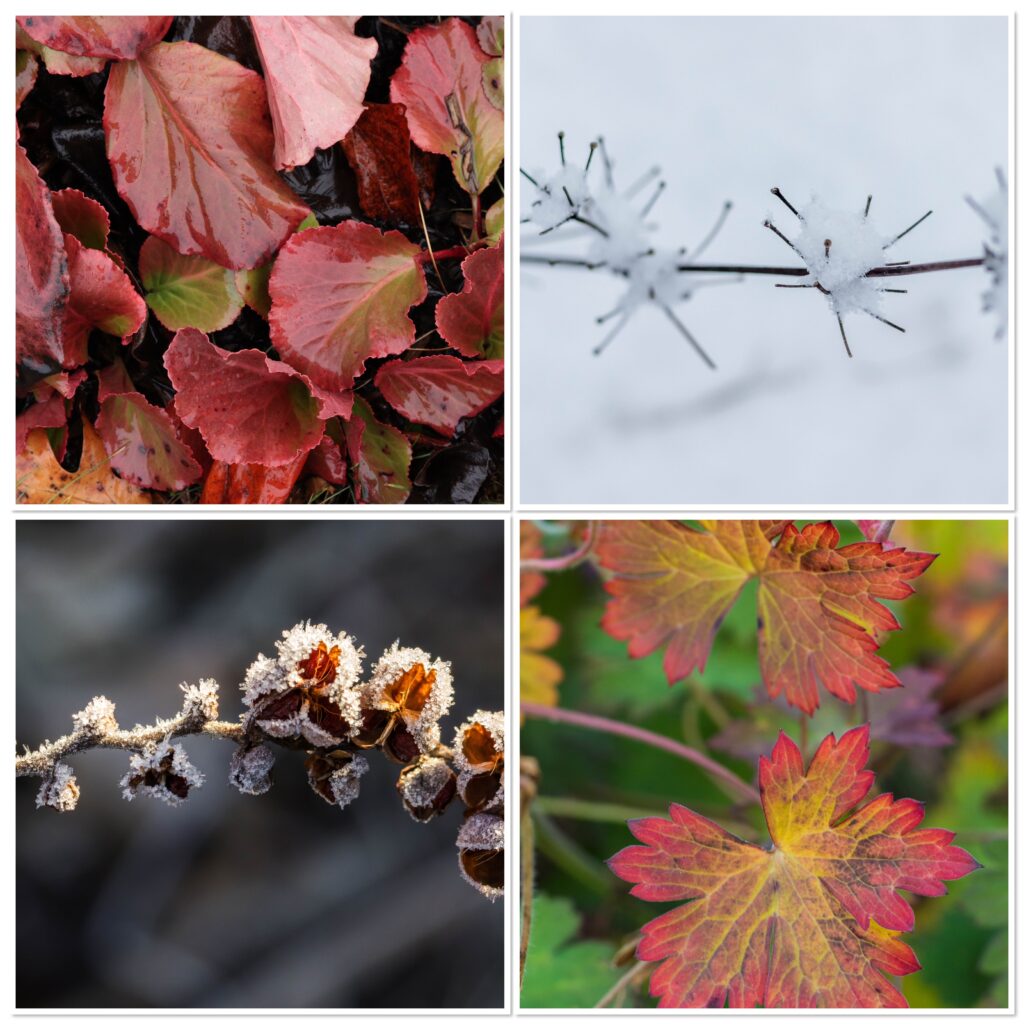By Sue Healey – Tillsonburg Horticultural Society
It’s when the sunlight turns golden that I know autumn has begun. That slanted light strikes differently. It shines across the stubbled fields, already shorn of their wealth, making them glow against the sky. It’s rich and clear. It signals that harvest is here and summer is fading. The garden is still green and blooming with late season gusto, but fall is coming. I feel it in the crisp, dewy mornings. See it in the clouds stacked across the sky. Frost will come and then snow. The garden will be made new with each shift of the weather. And with that shift I am thinking about the autumn and winter garden, contemplating what that late season might look like.
Years ago, September would have been the time to “put the garden to bed” in anticipation for the deep blanket of snow to come. Most perennials would have been cut to the ground, foliage and flower stalks too often crushed by the heavy layers or made anonymous under the white. With less reliable snow cover year after year, the garden beds have become more visible through the cold months. And so, over the last decade, September has become more about editing the garden than ending it. As it moves through autumn and winter, I’ve discovered that many plants offer another whole season or two of interest if left long enough. Coloured foliage, seed heads and even dried stalks can all provide interest and structure to the garden long after the cold temperatures have done away with flowers.
Although I diligently remove the seedheads of a great many of my plants, there are prized groups that I allow to set seed. Crocosmia Lucifer (Crocosmia) is at the very top of my list for year long interest. Tall and stately, this semi-hardy bulb produces flower stalks that can reach to a metre in height. The lipstick red flowers attract hummingbirds in late summer and then ripen to triple sided, knobby round pods that later crack to reveal rusty red or yellow seeds.
Gas plant (Dictamnus alba) is another stellar perennial for early and late season interest. After blooming in spring, the waist high stems are spangled with star shaped seed pods. Each holds five black ball bearings, one per arm that in late summer are shot across the garden in an astonishing feat of propulsion. The empty pods dry to mellow tan and last through the winter. Peonies, if left to set seed produce zippered pods full of black teardrops that shine in the saturated light of autumn. Bush clematis (Clematis heracleifolia)rounds out this group and is well worth the space it needs. Late season blue bells change to silver-haired comets and then to black, knee-high sparklers by winter’s end, a cheerful celebration in the sunny garden.
Perennial Statice (Limonium), sometimes known as sea lavender, is a hardy, drought tolerant perennial grown for its multiple sprays of tiny blue or white blossoms and its beautiful foliage. The flowers are long lasting and feed a multitude over the summer, but it is a tap-rooted, self seeder in my sandy soil. I remove the spent sprays promptly to avoid the stubborn seedlings. Once revealed to the sun, the low growing, basal leaves develop patches of spectacular colour, an almost stained-glass effect of orange, red, and maroon over green. That show is fleeting but they dry to a rich cinnamon, twisting and turning in the cold, catching the frost delightfully.
Good fall leaf colour can also be found in Bergenia (Bergenia cordifolia) if grown in enough sun. Bright crimson will slowly seep into the glossy, paddle shaped leaves over the fall, finally flooding it completely with deep red by first freeze. It’s a lovely sight in February when colour seems like a memory. My patch is well established and surprisingly drought tolerant. A cleanup of blackened leaves in the spring with a top dressing of compost will maintain this versatile plant for years. Look to the leaves of hardy geraniums (Geranium spp), balloon flower (Platycodon) and even Shastadaisies (Leucanthemum x superbum) for more splashes of late season colour.
Autumn is always bittersweet. September is the sweeter part of it. It’s good to be out again, to work and plan and bask in the golden light. And it’s good to leave some of the garden as it is.Letting what remains take us into another season, adding another layer of enjoyment and appreciation for the environment around us.
Just in time for fall planning, the Tillsonburg Horticultural Society is back to regular meetings after the summer break. Feature presentation: “Lesser-Known Spring Bulbs” by Robert Pavlis, Master Gardener, author and YouTube star.
Tuesday, September 3, 2024, Tillsonburg Seniors Centre, 7:30 pm
$20/year $4/meeting
“Come as guest, stay as a member”
📷 Sue
